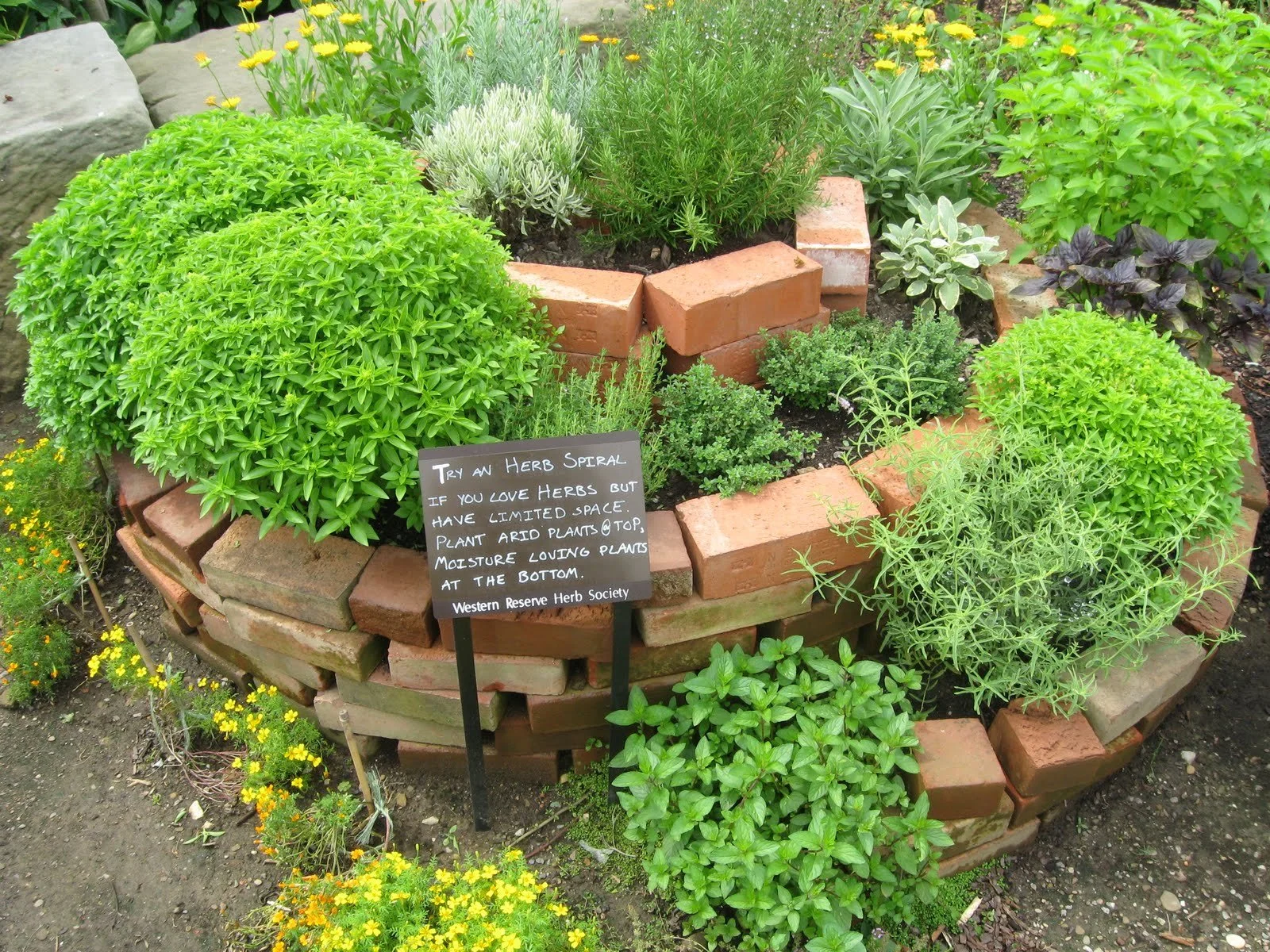Herb spirals provide you with many benefits:
- They create a range of micro-climates that allow you to place each herb in the right place to best meet its needs.
- Plants will be healthier and grow better in the right place:
- Rosemary at the top in the sun; basils and tomato in the middle; and mints and cress at the bottom where it’s moister.
- They can be built on concrete and in small spaces.
- You can grow more food on any given area by making use of vertical space.
- They create more habitat for lizards and frogs.
- They give you easy access to the plants. You can reach from all around on a small spiral, or walk up the spiral path on a bigger one.
- It’s easy to water with a can or with drip hose irrigation.
Supplies
- soil
- compost
- mulch
- rocks or bricks
- herbs
Step 1: For a backyard build a conical mound of soil at least 1m in height and 1.5m diameter, high enough to cast a good shadow. If you have plenty of room and want to make the herb spiral bigger, you can do so, provided you follow the ratio 1:1.5 of height to diameter at base. If you dig a big hole to get the mound of soil, you can make a pond out of the hole later.
Step 2: Place rocks or bricks around the base edge of the mound and then, starting from the base, place rocks or bricks in a line going upwards around the mound to make the spiral.
Step 3: Cover the soil with a good thick layer of mulch. Notice that the surface area you now have is bigger than the area you built on.
Step 4: Part the mulch where you want to put plants, and add a good helping of compost to those places.
Step 5: Plant herbs into the compost patches according to their needs: the herb spiral has a range of micro-climates on it. The Mediterranean herbs (rosemary, oregano, thyme, etc.) that like the sun go on the north-western side close to the top where the soil is dryer. Herbs that like a bit of shade, and moister soil, go on the south-eastern side near the base, where they’re shaded from afternoon sun.
Step 6: You could also build a small pond at the bottom of the herb spiral, to grow food in water (e.g. watercress, water chestnuts) and to attract lizards, frogs and birds to your garden to control any pests.

